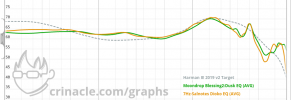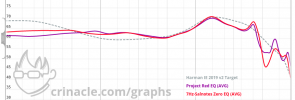This would be interesting to do, but not necessarily for the purposes of developing a reference curve. Again I think it comes down a difference of approach, and for a practical test application I don't really have any issues with the way Harman did it. It's more a question of how much you value wider compatibility. I think of it kind of like... our approach is a bit more condition-agnostic or 'de-siloed', with the ability to scale the concept to far more test situations, being backwards compatible with flat DF and scalable to future equipment as well, while Harman is specific to that test environment and equipment and will always carry those variables forward until they do the research again.
The other thing is that, in the event we do practical controlled tests with this and end up with a variable slope or preference boundaries like I'm advocating for, it can still be backwards compatible.
If you look at the other research I referenced, you can see that while most of the slopes are variable to some degree, the Harman slope is the outlier being the most variable. We're not saying that's wrong... rather that it's worth considering what this looks like without those conditions. The one thing that seems consistent is the bass to treble delta that people prefer, and so it makes sense to go with that as the starting point.
Edit: And... just so folks properly understand this, DF and Harman in-room before the filters were applied is very similar (if the same smoothing gets applied). There was that additional preference adjustment to the top of the ear gain, and this is precisely where I'm going with preference boundaries around the target as well - the whole point of my thread on this topic.





